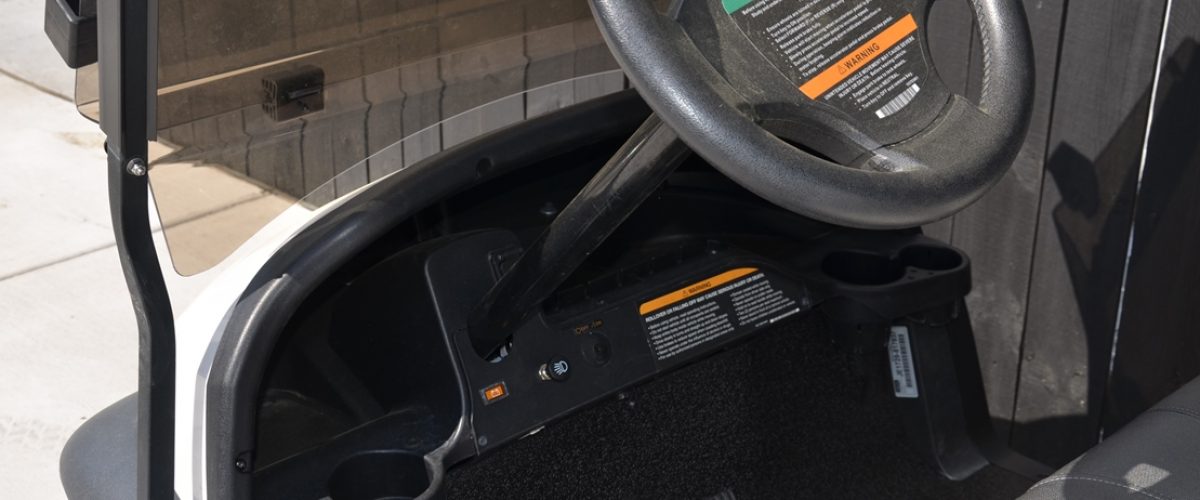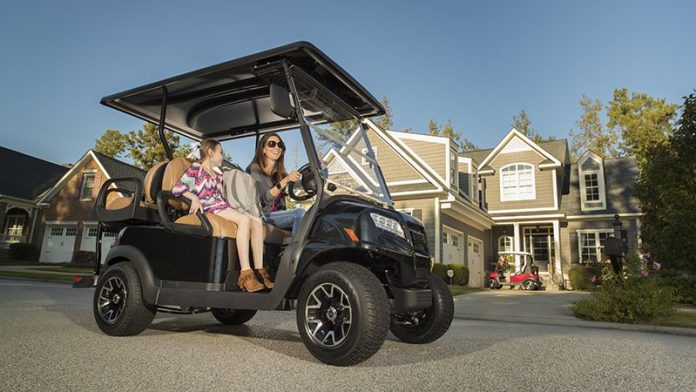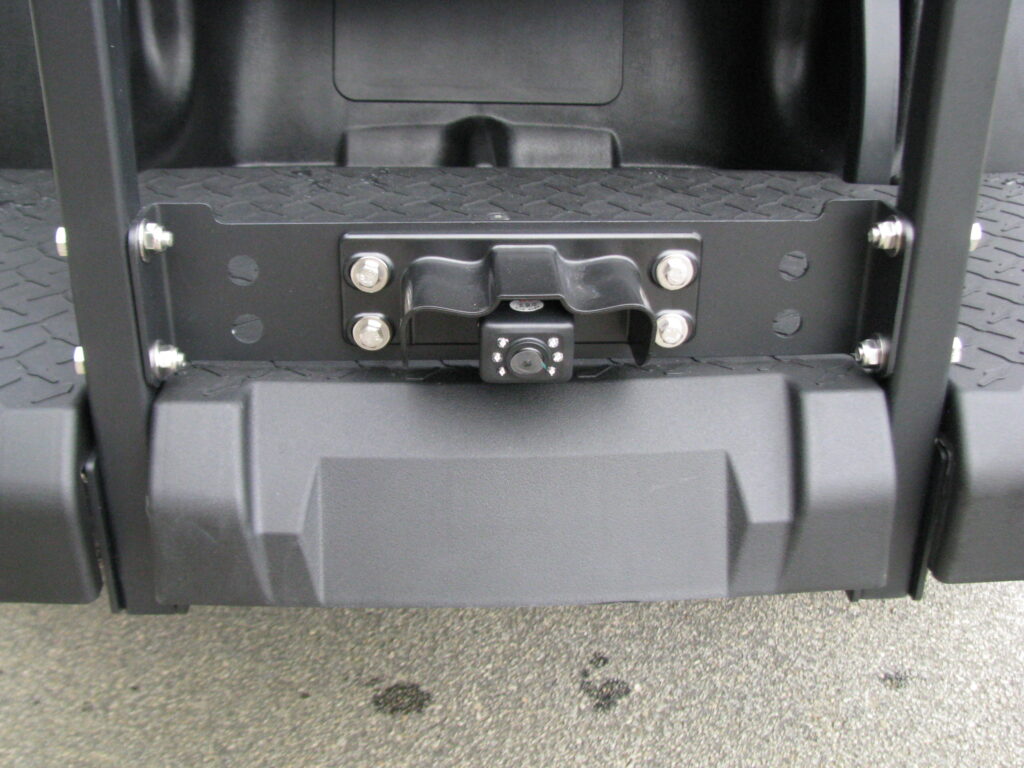
Many golf cart owners had solenoid problems and delay as a result of them. To examine and repair a golf cart, you must first know what a solenoid is.
The solenoid is the small unit that rides on top of the starter in the engine. The solenoid brings power from the battery to the rest of your golf cart. With the use of an electric charge, a solenoid may generate a magnetic field. In this article, you will learn everything about the golf cart solenoid and why condition worsens.
What Happens To Your Golf Cart When The Solenoid Goes Bad?
The large contacts in a gas golf cart may refuse to release, causing the starter to run even after turning off the ignition. Furthermore, the springs that pull the gear back to its resting state may start to break down, making the starters remain disengaged all of the time. (Starters are designed to get the engine running, then disconnect.)
The solenoid, like any equipment that depends on wiring, might simply wear out from overheating. The most common side effect on a gas golf cart is the starter failing to connect, resulting in the engine not turning over and a succession of useless tapping sounds.
If your golf cart fails to turn on when you turn the key on, this is the most obvious sign of solenoid failure. The solenoid clicks a little with the ignition system in regular operation; in most cases, a failing solenoid will not snap. There could be three things going on here: faulty interconnections, weak batteries, or the coil wearing out.

How Do You Test A Golf Cart Solenoid?
The following steps will tell you how you can test a golf cart solenoid.
- You’ll need a voltmeter/multimeter, as well as a 1/2″ wrench.
- Disconnect any wires that may be connected to the large terminals. Cover the cable terminals in tape and keep them apart from one another.
- Set your multimeter to ohms and insert a probe on each large terminal with the key off and the cart direction switch in the neutral position.
- Press on the accelerator with the cart’s movement control in the forward position, and the key is turned on. A click should be heard first from the solenoid.
- Once you hear this click, set your multimeter to ohms and put a probe on every large terminal terminal using your multimeter. A measurement of 0 to 0.4 ohms should be obtained. If you get a reading higher than this, you need to replace your solenoid.
- If your solenoid does not click, take out your multimeter, set it to DC volts on the 200 scale, and then attach a probe on each of the smaller terminals.
- Press on the accelerator while the key is turned on and the cart is in forward.
- The solenoid needs to be replaced IF the voltmeter shows a full battery voltage without a click.
- If your voltmeter stays at 0, the problem stems from somewhere else in your cart.
Can You Replace The Solenoid On A Golf Cart?
Changing the solenoid on your golf cart is normally easy, but you need a few types of equipment and a basic understanding of how the system operates. The ignition circuit connects to the solenoid, in the engine bay. When turning the key, the solenoid acts as a switch, energizing the ignition coil and igniting the fuel-air mixture. The solenoid could be the cause of your golf cart’s inability to start or run.
Golf carts are used for a number of purposes, the most common of which is getting around a golf resort. Carts frequently navigate the course or go from one location to another within the resort. Because the cart moves around so frequently, it is prone to malfunctions – such as a faulty solenoid. A solenoid replacement is a straightforward repair that most people complete in under an hour.
Steps to Replace a Golf Cart Solenoid
- Begin by carefully locating the faulty solenoid within the golf cart.
- Once located, disconnect all electrical wires that are attached to the solenoid terminals. It is crucial to meticulously note the position and connection of each wire to ensure correct reconnection to the new solenoid. Taking photographs or creating a simple diagram can be helpful in this regard.
- Remove any hardware, such as nuts, bolts, or screws, that is securing the solenoid to its mounting point.
- Position the new, compatible solenoid in the same location as the old one and securely fasten it using the appropriate mounting hardware.
- Reconnect all the previously disconnected wires to the corresponding terminals on the new solenoid, ensuring that all connections are tight and free of corrosion 15. Double-check the wiring against any reference diagrams or notes taken during the disconnection phase.
- Finally, reconnect the main battery cables to the battery terminals.
- After the replacement is complete, thoroughly test the golf cart’s operation to verify that the new solenoid is functioning correctly and that the starting and driving issues have been resolved.
Common Symptoms of Golf Cart Solenoid Failure by Cart Type
Symptom | Electric Golf Cart | Gas Golf Cart |
Cart Does Not Start/No Power | Yes | (Starter doesn’t engage) |
Unusual Clicking Sounds | Yes | Yes |
Intermittent Operation | Yes | Yes (starting) |
Stalling/Loss of Power During Operation | Yes | No |
No Clicking Sound Upon Ignition | Yes | No |
Overheating/Burnt Smell | Yes | Yes |
Starter Fails to Engage | No | Yes |
Starter Remains Engaged After Engine Starts | No | Yes |
Golf Cart Solenoid Testing Steps and Expected Outcomes
Test | Procedure | Expected Outcome (Good Solenoid) |
Voltage Test (Power to Solenoid) | Check voltage across large terminals with key off. | Full battery pack voltage. |
Activation Circuit Test (Control Signal) | Check voltage across small terminals when accelerator pressed (or key turned to start for gas). | Full battery pack voltage. |
Main Contact Resistance Test (Disengaged) | Check resistance across large terminals with key off and cart in neutral. | Infinite resistance (open circuit). |
Main Contact Resistance Test (Engaged) | Check resistance across large terminals while solenoid is clicking (accelerator pressed/key to start). | Very low resistance (0-0.4 ohms). |
Continuity Test (Coil) | Check continuity across small terminals with battery disconnected. | Audible beep or low resistance. |
Bench Test (Engagement) | Connect coil terminals to separate battery. | Audible click when power applied. |
Bench Test (Main Contact Continuity) | Check continuity across large terminals when bench-tested solenoid is energized. | Low resistance. |
For many people, golf carts are an excellent tool. They provide a little more pleasure to your day while also assisting you in getting around the golf course easier. They do, however, require maintenance, just like any other vehicle. It’s a good idea to check the fluids and make sure everything works properly if your golf cart isn’t running as smoothly as it should or is giving you difficulties. The solenoid is one of the most crucial components of a golf cart.

How Often Does A Golf Cart Solenoid Go Bad?
Your solenoid is prone to overheating as a result of its regular use. As a result, you may notice irregular operation after a while — it may work one time, but not the next. Loose cables or dusty interiors could cause your cart’s inability to start.
Like many other things, a golf cart solenoid requires maintenance to avoid problems affecting its functionality and preventing malfunctions that can ruin your productivity and fun on the cart. J’s Golf Carts offers service packages where you can routinely bring in your cart to prevent any issues with it.
Your solenoid becomes slightly dormant during operation, reducing the amount of time your golf cart battery is used. This is because the voltage is carried through it via its components, the steel pushbutton, and a thin cable, enabling energy to travel from the batteries to the motor in a linear motion. It will stop working when the power or voltage level is insufficient to trigger the solenoid. Solenoids require a specific voltage to work correctly. They will not function if they do not receive the proper voltage.
Signs of a Weak or Failing Golf Cart Solenoid
While it’s essential to understand how a solenoid operates and when it completely fails, early warning signs of a weak or failing solenoid are often overlooked. Identifying these subtle issues can help you avoid being stranded in the middle of your golf course or neighborhood. Here are some additional signs and symptoms of a weak solenoid that might indicate trouble before a total breakdown.
1. Intermittent Operation
One of the most common signs that your solenoid is weakening is intermittent operation. You might find that your golf cart runs perfectly one day but struggles to start or move the next. This inconsistency can be frustrating and is often an indicator that the solenoid is not receiving a consistent voltage or has internal wear. If this happens, it’s essential to test the solenoid before it completely stops working.
2. Unusual Clicking Sounds
While the solenoid normally makes a faint click when it engages, a failing solenoid might produce an unusual or louder clicking noise. If you hear a lot of clicking but the golf cart still won’t move, this can be a sign that the solenoid isn’t fully engaging. Excessive clicking without motion is a common red flag that the solenoid needs attention.
3. Burnt Smell or Heat from the Solenoid
If your solenoid is overheating, it may produce a burnt smell or feel excessively hot to the touch. This can happen due to loose connections or internal faults within the solenoid. Overheating can cause the solenoid to wear out more quickly and even lead to other electrical issues in your golf cart if not addressed promptly.
 Troubleshooting Solenoid Wiring Issues
Troubleshooting Solenoid Wiring Issues
Another important factor in diagnosing solenoid problems is understanding the wiring connections. Sometimes the solenoid isn’t the issue, but rather faulty wiring or loose connections can lead to similar symptoms. Here’s how you can troubleshoot potential wiring issues related to the solenoid:
- Loose or Corroded Wires: Over time, the wiring that connects to your solenoid can become loose or corroded, preventing proper electrical flow. Regularly inspecting and cleaning the wiring terminals can help prolong the solenoid’s lifespan. If you notice any frayed wires or rust, it’s time to replace them.
- Damaged Connectors: Check all the connectors attached to the solenoid. If any appear damaged or burnt, replace them immediately. A damaged connector can prevent the solenoid from receiving the correct voltage, causing malfunctions.
How Weather Can Impact Solenoid Functionality
While solenoids are robust, extreme weather conditions can also impact their functionality. Both high heat and freezing temperatures can cause wear and tear on the solenoid.
- Hot Weather: In hot climates, the solenoid can overheat more easily, leading to quicker degradation. It’s important to keep your golf cart in shaded or cool areas when not in use and perform regular maintenance to ensure that excessive heat doesn’t impact the electrical components.
- Cold Weather: Freezing temperatures can cause the solenoid’s internal components to stiffen or seize, leading to difficulty starting your cart in the cold. Keeping your golf cart in a garage or insulated space during the winter months can help prevent this issue.
Preventive Maintenance Tips
Proper maintenance of your solenoid can extend its life and help you avoid costly repairs. Here are some tips for preventive care:
- Clean the Solenoid Regularly: Dirt and debris can accumulate around the solenoid and affect its performance. Be sure to clean the solenoid area periodically to keep everything running smoothly.
- Check the Battery Voltage: Since the solenoid relies on a proper voltage supply to function, always check your golf cart’s battery. Weak batteries can cause the solenoid to malfunction, so maintaining a fully charged battery can prevent solenoid issues.
- Inspect the Wiring: As mentioned earlier, inspecting the wiring and connectors regularly can help prevent solenoid failure due to electrical issues. Tighten any loose connections and replace corroded or damaged wires as needed.
Conclusion
The solenoid in your golf cart is a vital component, and understanding the signs of failure, troubleshooting wiring issues, and maintaining the unit can save you time and money in the long run. By paying attention to subtle warning signs like intermittent operation, strange noises, or overheating, you can address solenoid problems before they escalate into bigger issues. Whether it’s ensuring proper wiring connections or adjusting to different weather conditions, regular upkeep will help keep your golf cart running smoothly.
J’s Golf Carts in Holly Springs, NC
This article has covered all you need to learn about golf cart solenoids, including the signs to watch for. If you suspect your golf cart has a damaged solenoid and would like to bring it to a professional, J’s Golf Carts can help you figure out what exactly is going on. Feel free to contact us today about bringing your cart in for servicing – we also have parts and accessories in stock if you need something else. We will get back to you within 24 hours. We look forward to hearing from you soon!
CONTACT US TODAY ABOUT YOUR CART NEEDS

